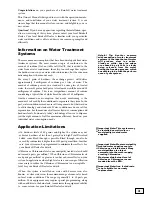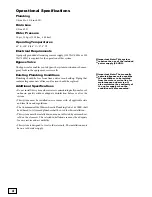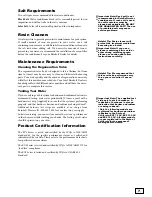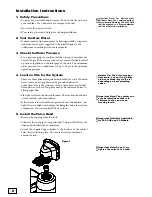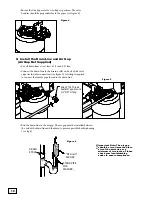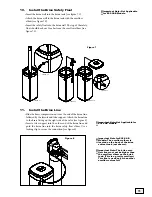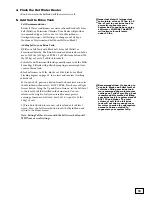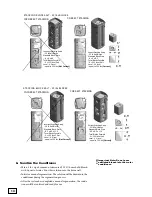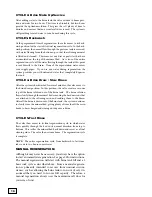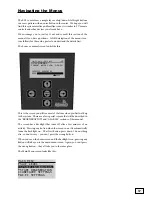
3
Congratulations
on your purchase of a RainSoft water treatment
system.
This Owner’s Manual is designed to assist with the operation, mainte-
nance, and installation of your water treatment system. It is our
sincere hope that this manual is clear, concise, and helpful to you as a
new owner.
Questions?
If you have any questions regarding the installation, oper-
ation, or servicing of this system, please contact your local RainSoft
Dealer. Your local RainSoft Dealer is familiar with your particular
water conditions, and is able to address your concerns promptly and
efficiently.
Information on Water Treatment
Systems
There are many misconceptions that have been developed about water
treatment systems. The most common topic of confusion is the
amount of sodium (Na), not table salt (NaCl), that is added to the
water from a water conditioner. In reality, ion exchange does replace
the hardness ions in your water with sodium ions, but the common
misconception is the amount used.
For every 1 grain of hardness, the exchange process will deliver
approximately 8 milligrams of sodium per 1 liter of water. The
amount of sodium present in a standard 8 ounce glass of treated
water, that was 10 grains hard prior to treatment, would be around 19
milligrams of sodium. This is an insignificant amount of sodium
considering a typical slice of white bread has about 140 milligrams.
Another common misconception that needs mentioning is the
amount of salt used by the conditioner to regenerate the system. In the
past, water conditioners used more salt to regenerate, but that was due
to old technology and standards. Water conditioners do use salt for
regeneration, but the amount of salt varies by water consumption and
hardness levels. Fortunately, today’s technology allows us to dispense
just the right amount of salt for maximum efficiency, based on your
individual water consumption needs.
Application Limitations
• On hardness levels of 60 grains and higher, the system may not
achieve a hardness of less than 1 grain; due to high Total Dissolved
Solids, some bleed through is possible. Bleed through can also be
caused by sodium levels higher than 1000 parts per million. In either
case, your system can be programmed to minimize these effects. See
your RainSoft Dealer for details.
• Chlorine or Chloramine levels on municipality treated water should
not exceed 4 parts per million.
*
When Chlorine or Chloramine levels
are 4 parts per million
*
or greater, it can have adverse effects on your
system. In applications where high levels are a concern, pre-filtration
is necessary to reduce the Chlorine or Chloramine to an acceptable
level. See your RainSoft Dealer for details.
• When this system is installed on water with Ferrous iron, also
known as clear water iron, the maximum range of removal is based
on local water conditions. The range is generally 2 to 10 parts per
million. Your equipment may require special programming, along
with an additive to the brine tank, to maximize the equipment’s ability
to remove iron. See your RainSoft Dealer for details.
!
Important Note: Iron fouled resin
is not eligible for warranty
replacement.
!
Important Note: This system may
be installed on well water or
municipality treated water
supplies.
!
Important Note: Most municipality
treated water supplies contain
Chlorine as a disinfectant. Many
municipalities also inject
ammonia into the water supply,
creating Chloramine.
Maximum disinfectant level of
Chlorine or Chloramine recom-
mended from the EPA.
*
Helpful Tip: Another common
misconception of water treatment
systems is the idea that soft water
will produce clear ice cubes.
Cloudy or white, hazy ice cubes
are caused by air that is slowly
being released from the water
during the freezing process, which
has nothing to do with the perform-
ance of your system.
Содержание EC5 Series
Страница 26: ...26 Valve Exploded View...
Страница 28: ...28 Control Exploded View 1 5 3 4 4 6 11 7 8 8 10 9 14 2 15 12 13...



